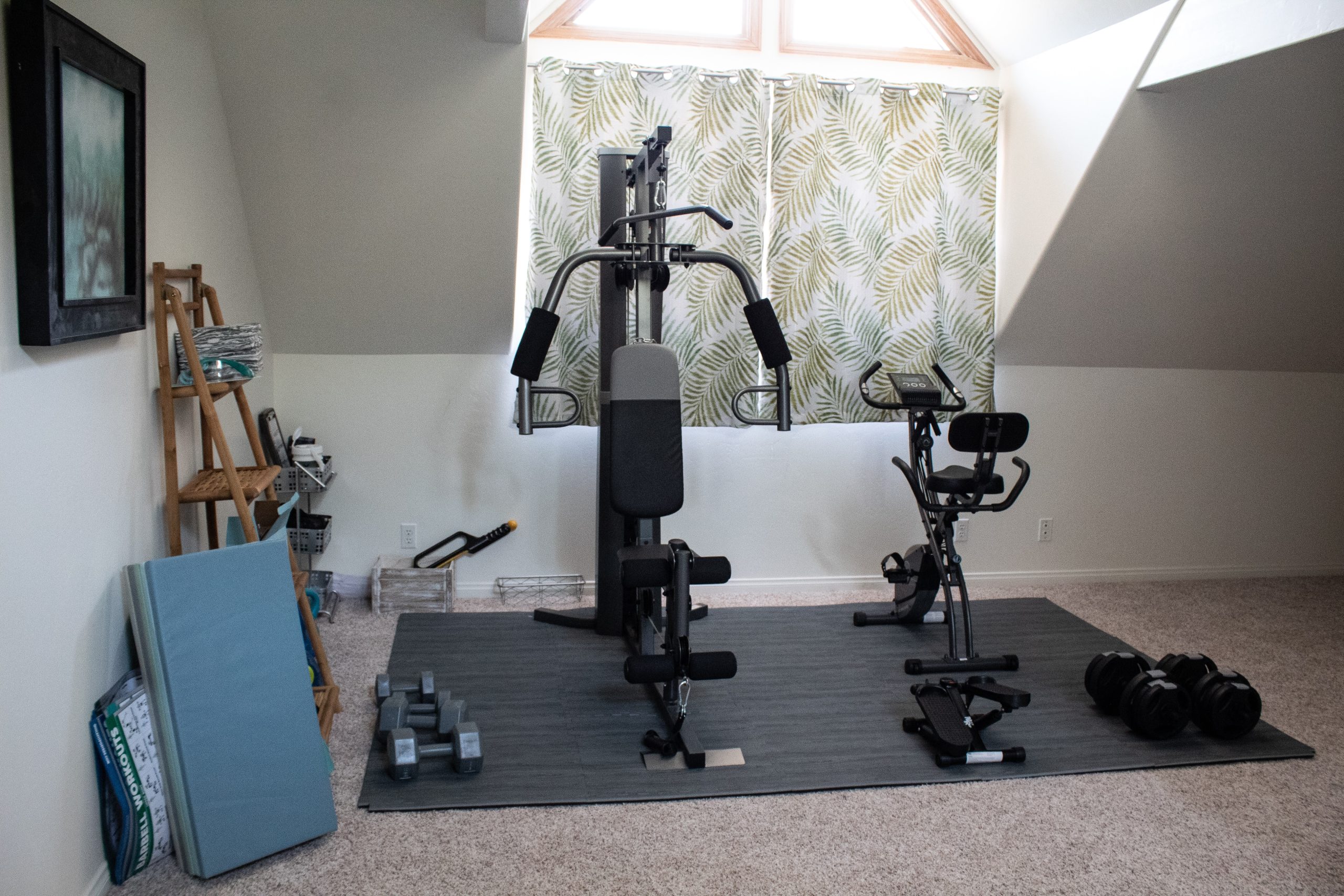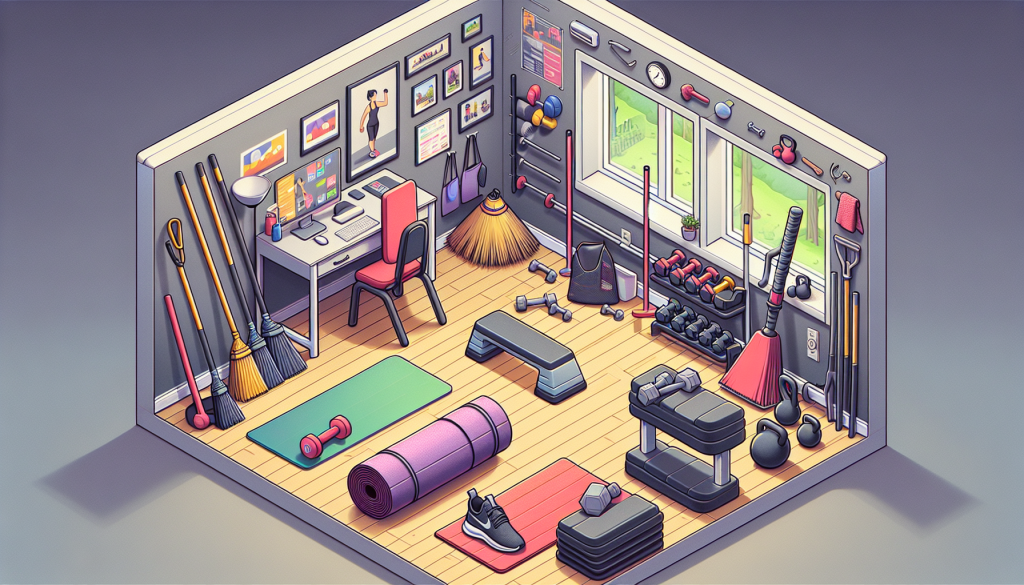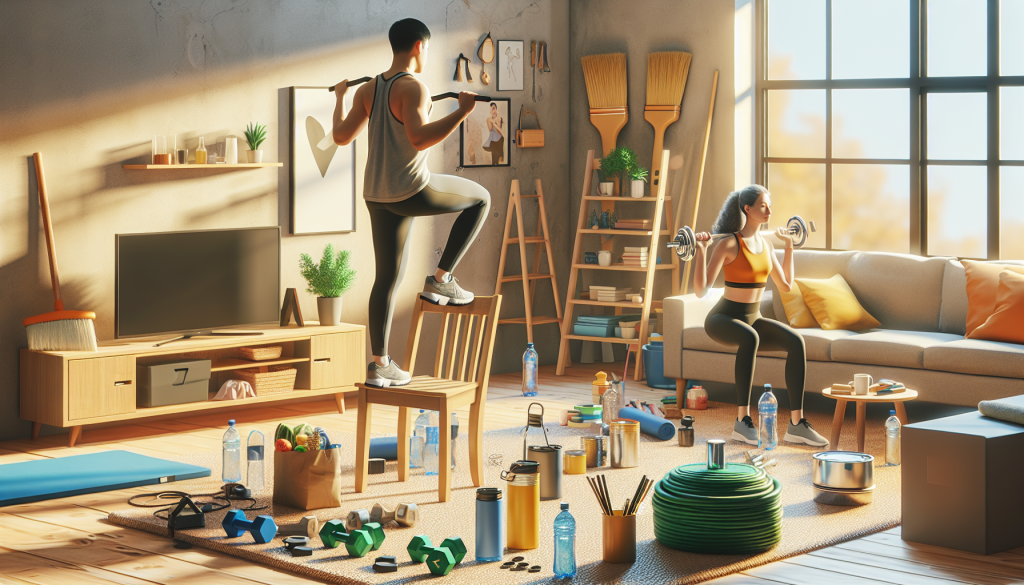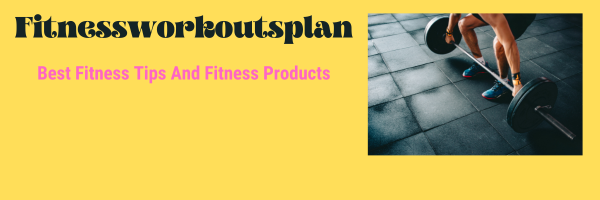Building A Home Gym On A Budget

If you’ve always dreamt of having your very own gym but worried about the hefty price tag that comes with it, worry no more. Building a home gym on a budget is easier than you think. In this article, discover clever tips and tricks to create a personalized workout space that is both affordable and effective. With a little creativity and resourcefulness, you’ll be well on your way to achieving your fitness goals without breaking the bank. So grab your gym gear and get ready to turn your home into a fitness haven.
Choosing the Right Space
Evaluating available space
When building a home gym on a budget, the first step is to carefully evaluate the available space. Consider whether you have an entire room dedicated to the gym or if you need to utilize a smaller area within a multi-purpose room. Take note of any obstructions such as windows, doors, or low ceilings that may limit your workout space. It’s important to ensure that the space is large enough to accommodate your workout needs comfortably.
Considering noise and ventilation
Another factor to consider when choosing the right space for your home gym is noise and ventilation. If you live in an apartment building or have neighbors close by, you’ll want to be mindful of the noise level generated by your workouts. Opt for a space that is away from shared walls or consider using noise-cancelling mats or foam tiles to reduce sound transmission. Additionally, adequate ventilation is crucial for maintaining a comfortable workout environment. Choose a space with windows or consider using fans or air purifiers to keep the air flowing.
Measuring the dimension
Before you start purchasing equipment, it’s essential to measure the dimensions of your chosen space. This step will help you determine how much equipment you can fit and ensure that it won’t overcrowd the area. Measure the length, width, and height of the space. Consider any additional clearance needed for equipment movement and storage. By having accurate measurements, you can plan the layout of your gym effectively and avoid any surprises or space constraints later on.
Clearing out the area
To make room for your home gym, it may be necessary to clear out the area of any furniture or clutter. This will create a blank canvas for you to work with and optimize the available space. If you have large or heavy items, consider enlisting the help of a friend or family member to assist with the removal. By clearing out the area, you’ll have a clean and organized space to build your budget-friendly home gym.
Setting a Budget
Determining your budget
Before you start purchasing equipment for your home gym, it’s important to determine your budget. Take a look at your current financial situation and decide how much you can comfortably spend on your fitness goals. Setting a budget will help you make informed decisions when it comes to selecting equipment, ensuring that you don’t overspend or compromise on quality.
Prioritizing essential equipment
When building a home gym on a budget, it’s crucial to prioritize essential equipment. Focus on acquiring the items that will give you the most versatility and functionality. Consider your workout preferences and fitness goals to determine what equipment is necessary for your routines. Items such as dumbbells, an adjustable weight bench, and resistance bands are versatile options that can provide a full-body workout without breaking the bank.
Researching cost-effective options
To maximize your budget, take the time to research cost-effective options for each piece of equipment you need. Look for sales, discounts, and promotions from reputable fitness equipment retailers. Compare prices across different stores and online platforms to ensure you’re getting the best deal. Don’t forget to read reviews and check the durability and quality of the equipment before making a purchase.
Exploring second-hand marketplaces
If you’re looking to save even more money, consider exploring second-hand marketplaces for gym equipment. Websites and apps such as Craigslist, Facebook Marketplace, or local buy and sell groups can often have great deals on used fitness equipment. While buying second-hand, it’s important to ensure that the equipment is in good condition and functions properly. Inspect the items thoroughly and try them out if possible before finalizing the purchase.
Selecting Basic Equipment
Dumbbells and resistance bands
Dumbbells and resistance bands are fundamental pieces of equipment for any home gym. They offer a wide range of exercises targeting different muscle groups and can be used by individuals of all fitness levels. Dumbbells come in various weights, allowing you to gradually increase the resistance as your strength improves. Resistance bands, on the other hand, provide a versatile and affordable alternative to traditional weights, making them ideal for those on a budget.
Adjustable weight bench
An adjustable weight bench is a versatile piece of equipment that allows you to perform a variety of exercises, including chest presses, shoulder presses, and seated rows. Look for a bench that can be adjusted to different incline and decline positions, providing you with options for targeting different muscle groups. Investing in an adjustable weight bench will greatly expand the range of exercises you can perform in your home gym.
Skipping rope and exercise mat
A skipping rope and exercise mat are low-cost but highly effective equipment options for your home gym. Skipping rope provides a fantastic cardiovascular workout while improving coordination and agility. Exercise mats provide cushioning and stability, making floor exercises more comfortable and safe. Both of these items take up minimal space and can easily be stored when not in use, making them excellent additions to a budget-friendly home gym.
Kettlebell or medicine ball
Adding a kettlebell or medicine ball to your home gym can provide excellent resistance training options. Kettlebells are versatile and can be used for exercises such as swings, squats, and rows. Medicine balls are great for core exercises, such as Russian twists and medicine ball slams. Both options offer a wide range of exercises targeting multiple muscle groups and can easily be incorporated into your workout routine without breaking the bank.
Pull-up bar or resistance bands
A pull-up bar or resistance bands are essential for upper body strength training. Pull-up bars can be mounted on door frames or walls, providing a sturdy platform for a variety of exercises, including pull-ups, chin-ups, and hanging leg raises. If you don’t have the option to mount a pull-up bar, resistance bands with door anchors can be an effective alternative. They allow you to simulate pulling exercises and target your back, biceps, and shoulders. Both options are affordable and space-saving choices for your home gym.
Creating a Cardio Corner
Choosing from various cardio options
When creating a cardio corner in your home gym, you have a variety of options to choose from. Treadmills, stationary bikes, ellipticals, and rowing machines are popular choices. Consider your fitness goals, personal preferences, and available space when selecting your cardio equipment. Keep in mind that some machines can be quite bulky, so opt for space-saving alternatives if you have limited room.
Opting for space-saving equipment
If space is a constraint, there are several space-saving cardio options available. Foldable treadmills, compact ellipticals, and exercise bikes with a smaller footprint can be great choices for smaller home gyms. These options allow you to maximize your workout space while still providing effective cardiovascular workouts.
Considerations for noise and impact
When selecting cardio equipment for your home gym, it’s important to consider the noise and impact it may create. Some machines, such as treadmills or rowing machines, can produce significant noise and vibrations during use. If noise is a concern, opt for machines with noise-reducing features or consider placing mats or foam tiles under the equipment to dampen the impact.
Building a DIY treadmill
If you’re on an extremely tight budget, you can even consider building your own treadmill using readily available materials. This DIY option can be a fun project and a cost-effective way to have a functioning treadmill in your home gym. There are various tutorials available online that provide step-by-step instructions on building a basic treadmill using wooden planks, rollers, and a motor.
Utilizing jump ropes and stairs
If you prefer cardio exercises that don’t require expensive equipment, jump ropes and stairs can be excellent options. Jumping rope is a highly effective cardiovascular exercise that can be done in a small space, and stairs provide a natural and challenging alternative to traditional cardio machines. Incorporating these exercises into your routine is both budget-friendly and convenient.

Utilizing Bodyweight Exercises
Benefits of bodyweight exercises
Bodyweight exercises offer numerous benefits, making them an essential component of any home gym. They can be done anytime, anywhere, without the need for equipment. Bodyweight exercises help build functional strength, improve balance, flexibility, and mobility. They also engage multiple muscle groups simultaneously, providing a full-body workout.
Designing a workout routine
When incorporating bodyweight exercises into your home gym routine, it’s important to design a well-rounded workout. Start by selecting exercises that target different muscle groups, including push-ups, squats, lunges, planks, and burpees. Aim for a balanced routine that incorporates upper body, lower body, and core exercises. Gradually increase the intensity and complexity of the exercises as your strength and fitness level improves.
Incorporating push-ups, squats, and planks
Push-ups, squats, and planks are three fundamental bodyweight exercises that can be done anywhere and are highly effective for building strength. Push-ups target the chest, shoulders, and triceps, while squats primarily target the lower body muscles. Planks engage the core muscles and help improve core stability. These exercises can be modified to suit different fitness levels, making them suitable for beginners and experienced individuals alike.
Exploring yoga and Pilates
Incorporating yoga and Pilates into your home gym routine can provide additional benefits, such as improved flexibility, balance, and posture. Yoga combines strength, flexibility, and mindfulness, and can be an excellent way to unwind and relax after a workout. Pilates focuses on core strength, stability, and control. Both disciplines require minimal equipment and can be easily practiced at home using instructional videos or apps.
Maximizing Space with Multi-functional Equipment
Benefits of multi-functional equipment
Multi-functional equipment is a great investment for those looking to maximize space in their home gyms. These versatile pieces of equipment allow you to perform a variety of exercises without the need for multiple machines. By consolidating your workout options into a single piece of equipment, you can save both space and money.
Investing in adjustable dumbbells
Adjustable dumbbells are a prime example of multi-functional equipment. They allow you to change the weight to suit different exercises and fitness levels, eliminating the need for a full set of individual dumbbells. With a simple adjustment, you can go from lighter weights for isolation exercises to heavier weights for compound movements. Investing in adjustable dumbbells can save both space and money, making them an ideal addition to your home gym.
Considering resistance bands with attachments
Resistance bands with attachments are another versatile and multi-functional option for your home gym. These bands come with handles, ankle straps, and door anchors, allowing you to target various muscle groups and mimic the movements performed on gym machines. Resistance bands can be used for strength training, stretching, and mobility exercises, providing a comprehensive workout experience in a compact format.
Utilizing a stability ball
A stability ball is a versatile piece of equipment that can be used for core exercises, balance training, and stretching. It engages the core muscles and stabilizers while performing traditional exercises, making them more challenging and effective. Stability balls are affordable, take up minimal space, and can be easily incorporated into your home gym routine.
Choosing a power tower or pull-up/dip station
For those looking to build upper body strength and perform advanced bodyweight exercises, a power tower or pull-up/dip station is a valuable investment. These multi-functional pieces of equipment provide sturdy platforms for performing various exercises, including pull-ups, dips, knee raises, and push-ups. Power towers and pull-up/dip stations often include additional features like adjustable heights, padded grips, and dip bars, making them versatile and space-efficient options.

Creating a Strength Training Zone
Importance of strength training
Strength training is an essential component of any fitness routine, and creating a designated strength training zone in your home gym allows you to focus on building muscle and increasing strength. Strength training helps improve bone density, increases metabolism, and enhances overall physical performance. It also offers a variety of exercises to target different muscle groups and achieve a well-rounded physique.
Investing in a power rack or squat stands
Investing in a power rack or squat stands is a must for anyone serious about strength training. These pieces of equipment provide a safe and sturdy platform for performing exercises such as squats, bench presses, and shoulder presses. Power racks often come with additional features such as pull-up bars and weight plate storage, maximizing their functionality and making them a worthwhile investment.
Considering a weightlifting barbell
A weightlifting barbell is an essential component of any strength training zone. It allows you to perform a wide range of exercises, including deadlifts, squats, overhead presses, and rows. When choosing a weightlifting barbell, look for one that is durable, has good knurling for grip, and can accommodate the weight plates you plan to use. A quality barbell is a long-term investment that will last for years.
Choosing weight plates and collars
In addition to a barbell, you’ll need weight plates and collars for your strength training zone. Choose weight plates that are suitable for the exercises you’ll be performing and the load you plan to lift. Collars are essential for securing the weight plates in place, preventing them from moving or sliding during your workouts. Look for collars that are easy to use and provide a secure grip on the barbell.
Adding a bench and adjustable weight bench
To expand your strength training options, consider adding a bench or an adjustable weight bench to your home gym. A bench allows you to perform exercises such as bench presses, incline presses, and dumbbell exercises. An adjustable weight bench offers the flexibility to incline or decline the bench, allowing you to target different muscle groups effectively. Look for durable and stable options that can withstand heavy weights and provide adequate support.
Designing Proper Flooring
Importance of appropriate flooring
Appropriate flooring is crucial for creating a safe and comfortable workout environment. It helps absorb impact, reduces noise, and provides a stable surface for exercising. By choosing the right flooring for your home gym, you can protect your equipment and yourself from potential injuries caused by slips or falls.
Evaluating different options
There are various flooring options available for home gyms, each with its own advantages and considerations. Rubber or foam tiles are popular choices due to their durability, shock-absorbing properties, and ease of installation. They provide cushioning for your joints and equipment, reducing the risk of damage. Other options include vinyl, cork, and hardwood floors, which offer different levels of impact absorption and aesthetics.
Choosing rubber or foam tiles
Rubber or foam tiles are excellent choices for home gym flooring due to their versatility and benefits. Rubber tiles are durable, moisture-resistant, and easy to clean, making them suitable for high-impact workouts. They come in interlocking tiles that are simple to install and can be customized to fit your specific space. Foam tiles provide excellent shock absorption, making them ideal for cardio areas or for individuals with joint sensitivities. They are lightweight, comfortable, and often come with anti-slip surfaces.
Considering alternative flooring methods
If purchasing specific gym flooring is not within your budget, there are alternative methods you can consider. Large, heavy-duty rubber mats can be used to cover the workout area, providing protection and stability. You can also use thick, high-density foam pads or carpets to create a cushioned surface. While these options may not provide as much shock absorption as dedicated gym flooring, they can still offer some level of protection and comfort for your workouts.

Optimizing Storage Solutions
Importance of organized storage
Effective storage solutions are essential for keeping your home gym organized and maximizing your space. Without proper storage, equipment can become cluttered, making it difficult to navigate and increasing the risk of accidents or damage. By optimizing storage solutions, you can ensure that your equipment is easily accessible, well-protected, and doesn’t take up unnecessary space.
Utilizing wall-mounted storage racks
Wall-mounted storage racks are an efficient way to utilize vertical space in your home gym. These racks can hold items such as dumbbells, kettlebells, resistance bands, and yoga mats. They keep your equipment off the floor and within reach, minimizing clutter and allowing for easy access during workouts. Look for racks that are sturdy, easy to install, and customizable to fit your specific needs.
Investing in shelving units
Shelving units are another useful storage option for organizing your home gym. They can hold larger items, such as foam rollers, stability balls, medicine balls, or yoga blocks. Opt for adjustable or modular shelving units that can accommodate different sizes and weights of equipment. Consider placing the shelves against the wall or in corners to maximize space efficiency.
Utilizing storage bins and containers
Storage bins and containers are valuable for storing smaller items such as resistance bands, jump ropes, or weightlifting accessories. These bins help keep everything organized and easily accessible while protecting the equipment from dust and damage. Label the bins to ensure you can quickly find what you need during your workouts. Choose clear bins or containers to easily identify the contents.
Safety and Maintenance
Ensuring safety during workouts
Safety should be a top priority when setting up a home gym. Make sure the space is well-lit with appropriate lighting to avoid accidents or injuries. Check the electrical outlets to ensure they are grounded and properly functioning before plugging in any equipment. Keep the floor clean and free of clutter to prevent tripping hazards. Additionally, consider installing mirrors in your home gym to ensure proper form and technique during exercises.
Installing proper lighting
Proper lighting is crucial for maintaining a safe and comfortable workout environment. A well-lit home gym reduces the risk of accidents and allows you to perform exercises with proper form and technique. Utilize natural light sources such as windows whenever possible. If natural light is limited, consider installing bright overhead lighting or task lighting in specific areas to ensure visibility.
Evaluating electrical outlets
Before plugging in any electrical equipment, it’s essential to evaluate the electrical outlets in your home gym. Ensure that the outlets are in good working condition, securely grounded, and can handle the power requirements of your equipment. If necessary, consult an electrician to assess and make any necessary upgrades or modifications to the electrical system.
Maintaining and cleaning equipment
Proper maintenance and cleaning of your home gym equipment are key to ensuring its longevity and performance. Regularly inspect the equipment for any signs of wear and tear, loose screws, or damaged parts. Follow the manufacturer’s instructions for maintenance, including lubricating moving parts and tightening bolts. Clean the equipment regularly to remove sweat and grime, using mild cleaning solutions or disinfectant wipes. By properly maintaining and cleaning your equipment, you can extend its lifespan and keep it in optimal condition.
By following these guidelines and making informed decisions, you can successfully build a comprehensive home gym on a budget. Remember to prioritize your fitness goals, utilize versatile equipment, and create a safe and inviting workout environment. With dedication, creativity, and a friendly approach, you can achieve your fitness aspirations without breaking the bank.

